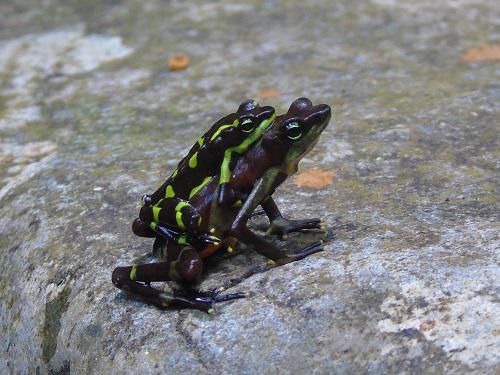Michael S Roy
Other projects
10 Nov 2010
Assessment of Atelopus limosus Population and Generating Habitat Characteristics through Ecological Niche Modelling
This project will assess niche requirements and natural history of the highly endangered Atelopus limosus to provide clues as to how this population survives in the face of the lethal Bd fungus.

Little is known about any species of Atelopus in the wild and only a handful of ecological studies were conducted before their declines. Many of the remnant populations now survive in remote areas where field studies are difficult. In addition, behavior and population dynamics of those remnant populations may be compromised by prior infestation with Bd. Managers of captive populations, including populations of A. limosus maintained at the Panamana Amphibian Rescue and Conservation Project (PARC), are left to guess at very basic aspects of breeding seasons, sex ratios and optimal larval conditions and so on.
A seemingly healthy, breeding, population of A. limosus survives at the Cocobolo Nature Reserve (CNR) in Panama. Understanding the basic biology of the CNR population of A. limosus would be invaluable for the captive management of this species and would provide a baseline habitat assessment for potential future reintroduction efforts. In addition, identifying critical habitat characteristics would allow for more directed conservation practices within the reserve, more accurate identification of potential refuges containing additional A. limosus populations and guide future land acquisitions to support amphibian conservation.
This project has the intended conservation outcome that wild populations of Atelopus spp. are better managed thereby increasing their chances of survival. This will be achieved through answering:
1. What are the niche requirements of surviving populations?
2. How are these related to life cycle events and behaviours?
3. How do surviving populations seemingly thrive even when Bd is present in the environment?
This project possesses positive benefits for the management of A. limosus (IUCN Endangered) as well as many other species in the genus (most IUCN CR, some IUCN-EX in Wild). Based on the limited information available, members of the genus Atelopus are relatively conservative in their habitat choice and overall biology. Currently no Atelopus species remain that are not under threat of extinction. Results from this study could benefit direct conservation efforts for A. limosus, and guide current and future efforts for other species in the genus.
This study will provide clear results for in-situ and ex-situ management of this A. limosus. Understanding reproductive behaviour and requirements will help management of captive populations at PARC, while understanding habitat use and niche needs will help with the identification and preservation of habitat in the areas surrounding Cocobolo Nature Reserve.